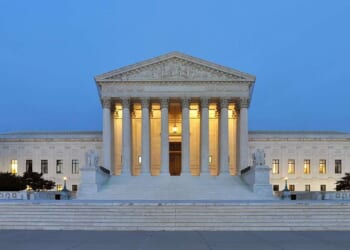This article is taken from the April 2025 issue of The Critic. To get the full magazine why not subscribe? Right now we’re offering five issues for just £10.
Get tough, Kemi
An effort at fair-mindedness makes me want to say to Kemi Badenoch’s critics that she needs to be given more of a chance. Even if the Conservatives could find a leader who combined the staunchness of Churchill, the deftness of Disraeli and Peel’s day-to-day competence, they would struggle to answer the objection: “Your party had 14 years to sort this mess out, yet you made it worse.”
It’s a poisoned chalice and the remarkable thing is that anyone is either public spirited — or self-deluded — enough to shoulder the responsibility of leading the Tories right now.
And yet I do find myself agreeing with Henry Hill [POLITICS, MARCH] that the Conservatives will not shake off the burden of their legacy merely by reaffirming their “values” as a soft option to avert splitting the parliamentary party over some actual non-centrist policies.
If a couple of MPs defect to the Liberal Democrats, then that is a small price to pay for making tough choices. By contrast, parroting “values” are not enough.
Even a prime minister as counter-productive to conservatism as Theresa May had values, the one subject upon which she was passably lucid.
I listened to a speech by Kemi Badenoch last December in which she outlined her argument that liberalism had been “hacked” by progressives. The Tories, she said, needed to reclaim it. Perhaps that is now the most that traditional conservatives like me can hope for — the promotion of liberalism by Tory ministers rather than activist lawyers.
But what many of us really seek is a leader who articulates in word and deed a form of conservatism that hasn’t been hacked by liberalism. Particularly since conservatism-as-liberalism is what we’ve had for most of this century.
Frances Johnson
Egham, Surrey
Queenly Quandary
Stephen Bayley [A MEMORIAL FIT FOR A QUEEN, MARCH] is right to worry about the process and criteria that will determine a national memorial to our late Queen.
A sculpture of her as a countrywoman with headscarf and corgis — how she might have seen herself — would be twee. She was our diligent and hard-working head of state, not a volunteer at the church jumble.
There are problems with a realist, true to life sculpture, the most obvious being that, as she was only 5 ft 3 inches tall, the plinth would be the dominant feature. Yet nor do we want the sculptor to go to the opposite extreme of turning her into an Amazonian bestriding her Commonwealth, which would be ludicrous.
The bronze sculpture of her by Hywel Pratley unveiled in Oakham, Rutland last year portrayed her in regal garb but with corgis, an attempt to square a circle of majesty and homeliness that consequently ended up achieving neither.
It is probably unfeasible that an equestrian statue of her will grace Trafalgar Square’s fourth plinth, given the desire to reserve it for showcasing the glib tat of our contemporary art scene.
And, on which subject, please may she not be represented in an abstract work. She showed not the slightest interest in modern art, even if it was the dominant form of cultural expression during her reign.
I confess that, despite his best efforts, I’m left at the end of Stephen Bayley’s article with no real clarity on how she might be successfully memorialised. This is particularly so since Ascot already has a Queen Elizabeth II stakes.
Jonathan Dalgleish
North Berwick, East Lothian
Supermac’s triumph
It was not as prime minister, as Paul Goodman asserts, but as defence secretary that Harold Macmillan spoke to deferential journalists before leaving for a NATO meeting in Paris in 1954 [HOW THE PRESS HAS CHANGED, AND HOW IT REMAINS THE SAME, MARCH].
He departed on 21 October 1954 for talks to try to end a row over the Saarland. As he recorded in his diary, France — which had administered it since 1945 — threatened to “bring down the whole fabric” of the Western Alliance at the height of the Cold War if the territory was handed over to West Germany.
By the time Macmillan returned on 24 October, amity had been restored thanks to British diplomacy. He noted: “The Germans and the French came to terms over the Saar, and the full series of agreements were signed yesterday afternoon. It has been a real pleasure seeing England leading Europe.” He slipped away by train to Haywards Heath without encountering any more fawning press men.
Lord Lexden
House of Lords







